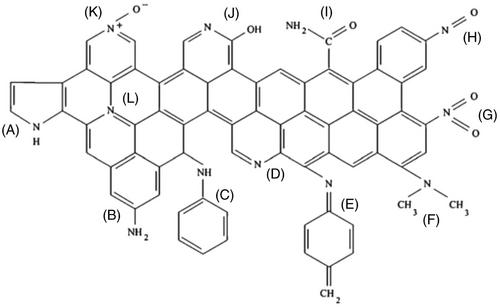下载PDF
{"title":"低温固体吸附剂在工业二氧化碳捕集中的应用前景。关注生物质残渣作为前体材料","authors":"Nausika Querejeta, María Victoria Gil, Fernando Rubiera, Covadonga Pevida","doi":"10.1002/ghg.2210","DOIUrl":null,"url":null,"abstract":"<p>Adsorption using bio-based adsorbents has been pointed out as an economical and environmentally benign technology for CO₂ gas separation and storage. A bio-based adsorbent can be fabricated from low-cost worldwide available biomass feedstock and bio-wastes from different industries (e.g., dairy manure, forestry, agriculture). As a result, it is a carbon rich material of hydrophobic nature, activated to gain high porosity development, and requires mild regeneration conditions. However, large-scale deployment of bio-based adsorption processes remains challenging. Our group has been intensively developing biomass-based adsorbents in conjunction with the design of tailored CO₂ adsorption-based cyclic processes for the envisioned application. Herein, key concepts on adsorption technology, biomass waste management, and different activation techniques for biomass-based adsorbent precursors are discussed. This review addresses the most relevant studies in the literature, from lab experimentation on a milligram scale (volumetric and gravimetric tests) to dynamic tests in bench or large-scale cyclic adsorption processes (i.e., pressure swing adsorption, temperature swing adsorption, vacuum swing adsorption). Therefore, the main target is to give a holistic view of the industrial applications where CO₂ separations with these materials are more suitable. Finally, concluding remarks and future perspectives of bio-based adsorbents in carbon capture are presented. © 2023 The Authors. <i>Greenhouse Gases: Science and Technology</i> published by Society of Chemical Industry and John Wiley & Sons Ltd.</p>","PeriodicalId":12796,"journal":{"name":"Greenhouse Gases: Science and Technology","volume":"13 2","pages":"245-284"},"PeriodicalIF":2.7000,"publicationDate":"2023-03-27","publicationTypes":"Journal Article","fieldsOfStudy":null,"isOpenAccess":false,"openAccessPdf":"https://onlinelibrary.wiley.com/doi/epdf/10.1002/ghg.2210","citationCount":"1","resultStr":"{\"title\":\"Prospects of low-temperature solid sorbents in industrial CO₂ capture: A focus on biomass residues as precursor material\",\"authors\":\"Nausika Querejeta, María Victoria Gil, Fernando Rubiera, Covadonga Pevida\",\"doi\":\"10.1002/ghg.2210\",\"DOIUrl\":null,\"url\":null,\"abstract\":\"<p>Adsorption using bio-based adsorbents has been pointed out as an economical and environmentally benign technology for CO₂ gas separation and storage. A bio-based adsorbent can be fabricated from low-cost worldwide available biomass feedstock and bio-wastes from different industries (e.g., dairy manure, forestry, agriculture). As a result, it is a carbon rich material of hydrophobic nature, activated to gain high porosity development, and requires mild regeneration conditions. However, large-scale deployment of bio-based adsorption processes remains challenging. Our group has been intensively developing biomass-based adsorbents in conjunction with the design of tailored CO₂ adsorption-based cyclic processes for the envisioned application. Herein, key concepts on adsorption technology, biomass waste management, and different activation techniques for biomass-based adsorbent precursors are discussed. This review addresses the most relevant studies in the literature, from lab experimentation on a milligram scale (volumetric and gravimetric tests) to dynamic tests in bench or large-scale cyclic adsorption processes (i.e., pressure swing adsorption, temperature swing adsorption, vacuum swing adsorption). Therefore, the main target is to give a holistic view of the industrial applications where CO₂ separations with these materials are more suitable. Finally, concluding remarks and future perspectives of bio-based adsorbents in carbon capture are presented. © 2023 The Authors. <i>Greenhouse Gases: Science and Technology</i> published by Society of Chemical Industry and John Wiley & Sons Ltd.</p>\",\"PeriodicalId\":12796,\"journal\":{\"name\":\"Greenhouse Gases: Science and Technology\",\"volume\":\"13 2\",\"pages\":\"245-284\"},\"PeriodicalIF\":2.7000,\"publicationDate\":\"2023-03-27\",\"publicationTypes\":\"Journal Article\",\"fieldsOfStudy\":null,\"isOpenAccess\":false,\"openAccessPdf\":\"https://onlinelibrary.wiley.com/doi/epdf/10.1002/ghg.2210\",\"citationCount\":\"1\",\"resultStr\":null,\"platform\":\"Semanticscholar\",\"paperid\":null,\"PeriodicalName\":\"Greenhouse Gases: Science and Technology\",\"FirstCategoryId\":\"93\",\"ListUrlMain\":\"https://onlinelibrary.wiley.com/doi/10.1002/ghg.2210\",\"RegionNum\":4,\"RegionCategory\":\"环境科学与生态学\",\"ArticlePicture\":[],\"TitleCN\":null,\"AbstractTextCN\":null,\"PMCID\":null,\"EPubDate\":\"\",\"PubModel\":\"\",\"JCR\":\"Q3\",\"JCRName\":\"ENERGY & FUELS\",\"Score\":null,\"Total\":0}","platform":"Semanticscholar","paperid":null,"PeriodicalName":"Greenhouse Gases: Science and Technology","FirstCategoryId":"93","ListUrlMain":"https://onlinelibrary.wiley.com/doi/10.1002/ghg.2210","RegionNum":4,"RegionCategory":"环境科学与生态学","ArticlePicture":[],"TitleCN":null,"AbstractTextCN":null,"PMCID":null,"EPubDate":"","PubModel":"","JCR":"Q3","JCRName":"ENERGY & FUELS","Score":null,"Total":0}
引用次数: 1
引用
批量引用



